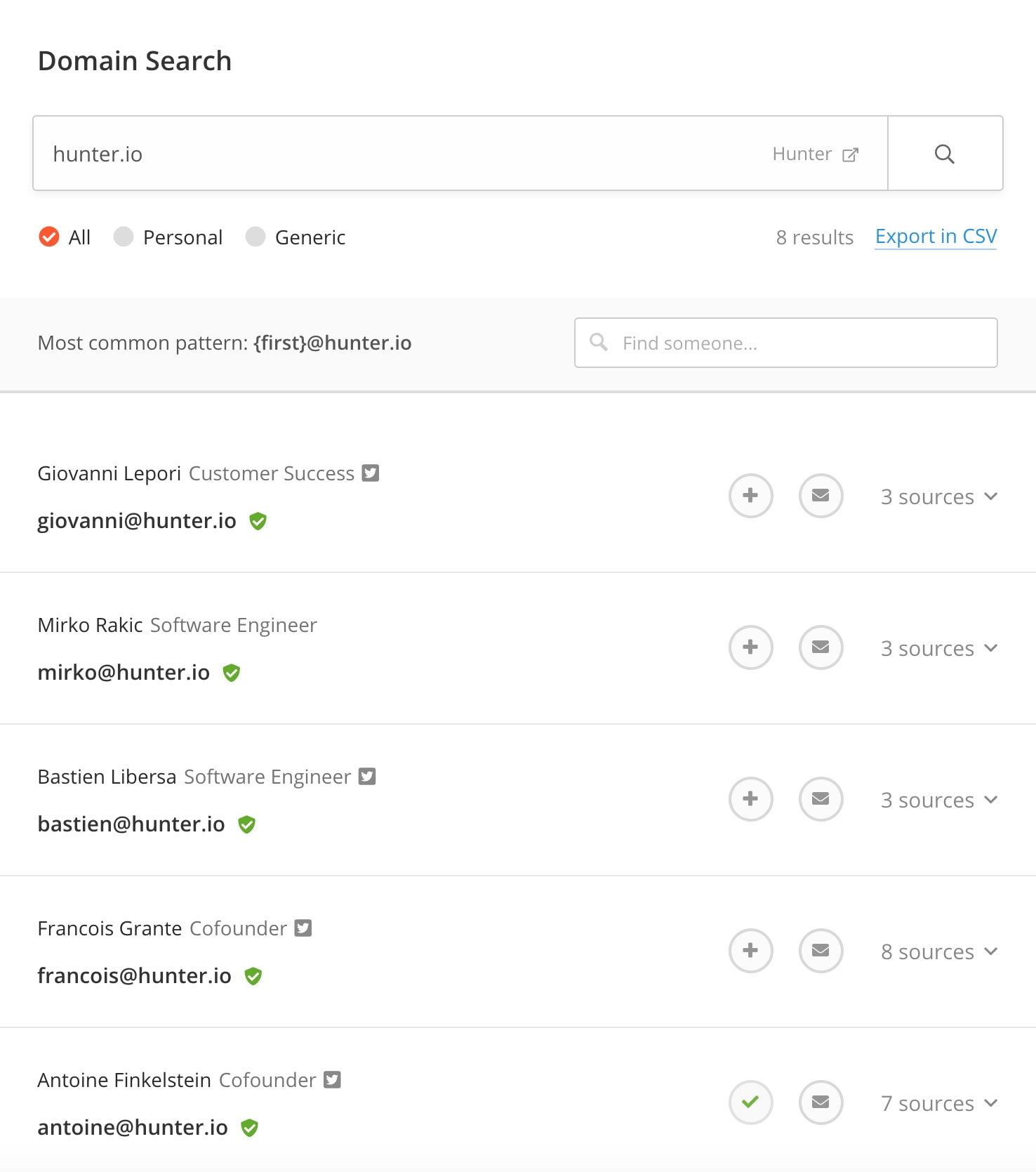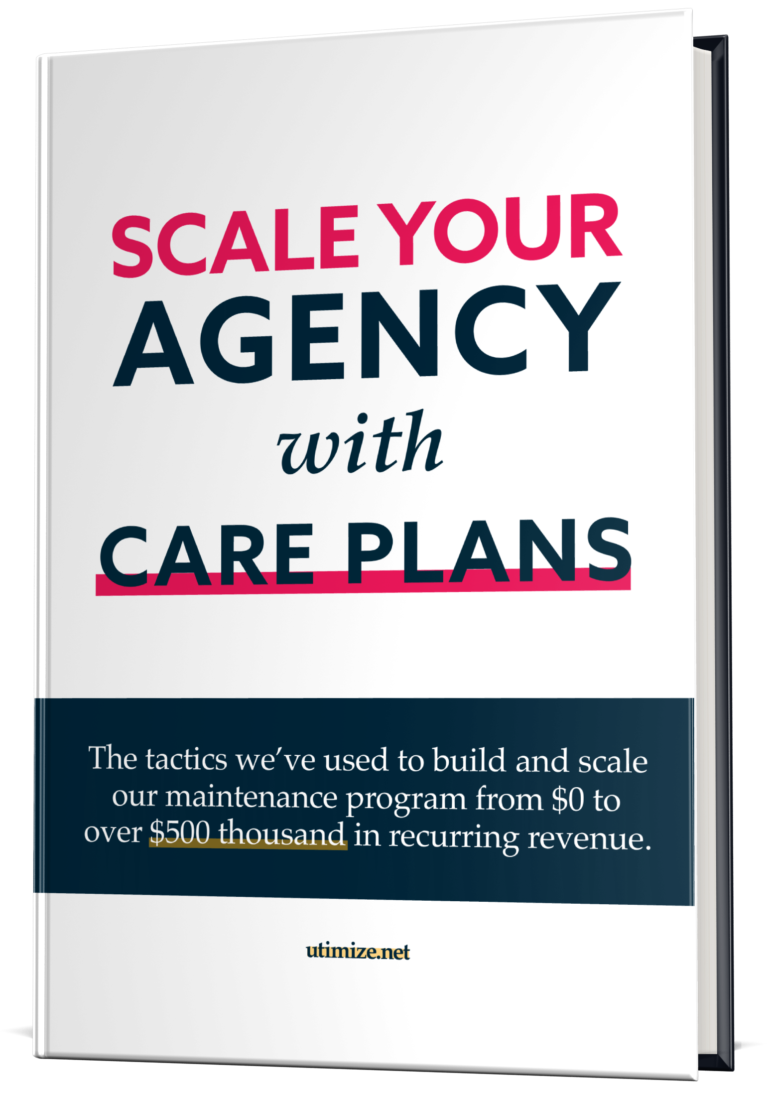Apprehension, fear and anxiety. I’m sure you’ve felt those, like many other salespeople feel. Things start to get worse when you try to sell something to someone who doesn’t know you, and therefore doesn’t trust you.
I’ve been in your shoes! The worst part for me was, English is not even my first language and, as a developer (I used to be one before founding Utimize), I was a very introverted person.
Once I learned and understood that selling is nothing more than statistics, I gained the confidence to face my difficulties and approach my first clients.
In this article, I will show you 5 steps to getting your first customers through cold outreach:
Define the Schedule – How many hours you should dedicate per week, the best days to send emails and the best time of the day to send them, and how to keep consistency.
Research & Qualify – How to qualify your prospects and get better conversion rates.
The Decision Maker – How to find who’s the decision maker and the best way to approach them.
Don’t Sell, Create Connections Instead – How to create real human relations and stop sounding like a robot.
Follow Up and Connect – How to follow up on prospects without being pushy and annoying.
1. Define the Schedule: The Importance of Consistency
You won’t get great results by sending 10 emails on Monday and another 2 on Friday. It’s all about consistency!
In fact, you should stick to a schedule with specific and measurable goals. This can be something very personal, but here are a few points gathered from MailChimp you should consider while creating your schedule.
- The best days to send business emails are Monday through Friday.
- The best time range is from 10am to 12pm.
- As expected, the worst days to send business emails are Saturday and Sunday.
- The worst time range to send emails is from 10pm to 7am.
Personally, I like to have time to research and see if my efforts during the week were worth it, how I can improve my response rates, and more importantly, my conversion rates. So that’s how I organize my schedule:
If you don’t have 6 hours on Mondays/Fridays and 3 hours on Tuesdays to Thursdays, I highly recommend you to find at least 10 hours per week for prospecting. Also, remember to keep consistency and define the number of prospects you want to reach out to every day.
As a starting point, you should contact at least 20 clients in your first week.
Research & Qualify
This is how you will discover and define whether your response rate is 90%, or if it’s 0%. Targeting is key in inbound marketing, and it should be in outbound marketing too.
The most important part of cold outreach is to discover the magical number—the probability of a prospect to be interested in your offer. As I mentioned in the beginning of this article, it’s pure math, and you should be able to calculate this number by asking yourself a few questions during your research:
- Based on your ideal persona, is there a match (in terms of company size, revenue, geo-location etc)?
- How necessary is your offer to them right now?
- If they do nothing about your offer, what are the impacts on their businesses?
- Will it increase their revenue or save their time?
- Is budget a problem? If so, is it worth checking in again in the future?
Make sure you have all these questions answered for every prospect you decide to reach out to. It’s important to understand their needs and provide a personalized approach to their pain points.
The Decision Maker: How to Find Who’s in Charge in Under 5 Minutes
You shouldn’t waste your time contacting general email addresses like contact@. You probably already know it: you should go after the person with buying power!
The good news is, you can use the step-by-step guide below to find the right stakeholder in under 5 minutes—and it usually works for 95% of the cases.
Step 1 – Identify the number of employees working in the company and try to fit them in one of the categories below:
- 0 to 10 employees: Usually the CEO or co-founders (if any), have the ability to make a decision
- 10 to 30 employees: For most cases, VPs are the ones you should talk to
- 30 to 300 employees: Managers (Sales Manager, Product Manager, etc.)
- 300+ employees: The regional specialized role should be your contact here
You can either use their website ‘About’ page or their LinkedIn profile to check the number of employees and perhaps find the right stakeholder based on the categories above.
Step 2 – Find the decision maker’s email address. There are a couple of ways to do that, but my preferred one is Hunter.io:
If you aren’t able to find the email address using Hunter.io’s Domain Search or Email Finder, you can use the Email Verifier tool to test one of the variations below, which works almost 90% of the time:
- {first name}@company.com
- {first name}{last name}@company.com
- {first initial}{last name}@company.com
- {first initial}{middle initial}{last name}@company.com
- {first name}.{last name}@company.com
Don’t Sell, Create Connections Instead
I’ve easily taken more than 20 online courses on cold outreach and I can say there’s a lot of misinformation out there. I’m seeing sales reps sending hundreds of emails each day. No personalization. Poor pitch. Always talking about themselves and never considering the prospects’ needs.
Strategies like that aren’t effective, especially when you use them to talk to people that don’t know anything about you, your company, or your products. In fact, you’ll probably get trashed at the moment the prospect sees your message.
Things to keep in mind when writing cold emails:
- Mindset: You want to create real human connections. Don’t be salesy.
- Subject line: Don’t be too specific. Keep it as generic as possible.
- First sentence: It must be about the client and not about you (i.e., an award, interesting blog post, new product launch, etc.).
- Body: 6 to 8 sentences is enough to introduce yourself and offer help.
- Call to action: Avoid asking for 15 minutes on the phone or trying to get them to test your services in your first contact attempt. Provide value instead and position yourself as a reliable authority they can ask for help when they need.
Just so you can see what I’m talking about I’ve written the email below, where instead of selling something, I’m trying to create a connection with the prospect.
Re: Questions about your site — company.com
Hey Josh,
I loved your presentation in the Marketing Automation Day —hearing great feedback in the 10xCompany FB group.
I know you probably have a great team handling your website, but I’m wondering if you guys have any SEO strategy in place for the next quarter? I’m attaching an audit to this email with actionable recommendations you can start using today.
Let me know your thoughts about it.
Best,
Ricky Branson
Emails like the one above usually get higher response rates and even if you don’t make a sale, I ensure this prospect will keep you in mind for future opportunities of working together.
Follow Up and Connect
Cold outreach can be very frustrating. Even though you’re doing things right, you may not see any results from your first attempts to connect with someone. Here are two statistics you should keep in mind:
- 70% of sales reps stop trying to connect after the first attempt. 20% give up after the second attempt.
- The prospect usually takes action after 6~8 attempts to connect.
You shouldn’t use follow up emails just to bring your original message to the top of the prospect’s inbox. Instead, use them as new opportunities to provide more value. Each follow up email should be unique and personalized.
To exemplify what you shouldn’t do, check the follow up email I received a couple days ago:
Re: Improve your Adwords Results
Hi there,
Wanted to check if you got my last email and if it would make sense to set up a quick intro call about our Partner Program.
Use the link below to set up the meeting:
****
Thanks,
****
The person probably got very low response rates, and here are the reasons why I think that happened:
- He probably copied and pasted the message above to everyone he didn’t get a response from. I say that because it’s not personalized at all.
- I’m 100% sure they’ll try to sell something to me right off the bat and that’d be totally fine if I knew who he was, what he sells, etc. I have no connection with him at all, so I’m not even interested in knowing more about his offering.
- It looks like he doesn’t know anything about me or my needs, so again, it is likely a copy and paste to 200 emails on his spreadsheet.
This is how I’d follow up on this email example:
Re: Improve your Adwords Results
Hey Josh,
Just checking in on this – did you have the chance to review the audit I attached to my last email? I’d love to know your thoughts about it.
Also – we’ve produced an article this week that may help you to fix the [problem#1] we mentioned in the audit.
[article link]
Let me know if you have any questions.
Best,
Ricky Branson
That’s it! Make sure to always create personalized messages that provide value and the chances are you’ll start creating more solid relationships with prospects, leading to sales.
I know cold outreach isn’t easy and can be very frustrating when you receive no’s. The fact is, it works well for small businesses with small budgets and combined with inbound marketing, it’ll skyrocket your sales. See what you’re doing wrong, optimize, and keep consistency.



